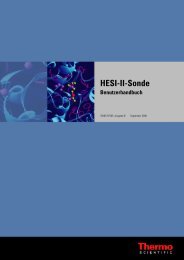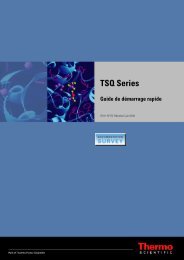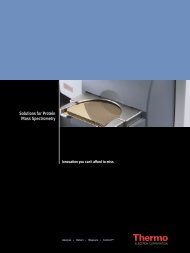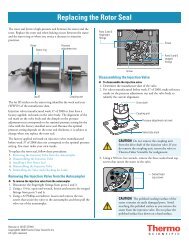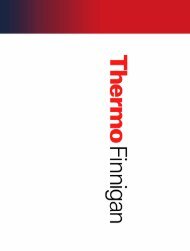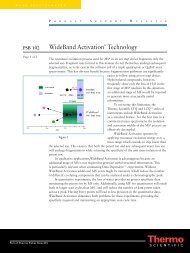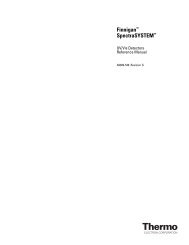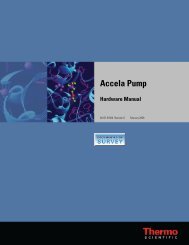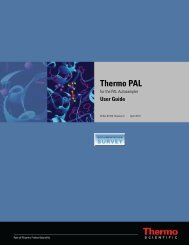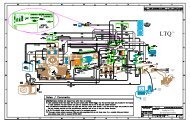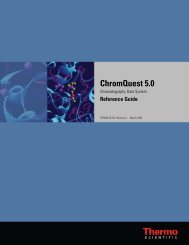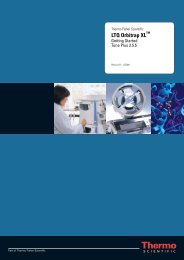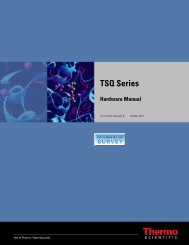SIEVE User Guide
SIEVE User Guide
SIEVE User Guide
You also want an ePaper? Increase the reach of your titles
YUMPU automatically turns print PDFs into web optimized ePapers that Google loves.
About the <strong>SIEVE</strong> Procedure<br />
1 Overview to <strong>SIEVE</strong><br />
About the <strong>SIEVE</strong> Procedure<br />
The following section describes the <strong>SIEVE</strong> procedure. For specific information on each step,<br />
see Chapter 2, “Setting up a Procedure.”<br />
Step 1: Acquire raw data Discovery experiments for global biomarker often consist of thousands of<br />
complex MS and MS n data. <strong>SIEVE</strong> accommodates both high-resolution<br />
and low-resolution data, including data from the LTQ XL linear ion<br />
trap mass spectrometer, as well as the hybrid LTQ Orbitrap and LTQ<br />
FT Ultra instruments.<br />
Step 2: Combine multiple data An effective biomarker experiment requires the comparison of at least two<br />
raw data files, but to be statistically meaningful, the experiment must<br />
include several control samples compared to several treatment (disease)<br />
samples in the form of technical replicates and bio-replicates. <strong>SIEVE</strong><br />
supports comparing 50 chromatograms to another 50 chromatograms,<br />
totalling 100 raw data files. To facilitate this comparison, <strong>SIEVE</strong> presents<br />
the data in one consolidated view that you can quickly view for<br />
differences. <strong>SIEVE</strong> can combine and compare from 2 to 100 data files.<br />
Step 3: Align ... Chromatograms Chromatographic alignment is an important step in the <strong>SIEVE</strong> pipeline<br />
since all the experimental data (up to 100 data files) is analyzed in the<br />
common, multivariate space described in Step 2. Consequently, <strong>SIEVE</strong><br />
must correct for any chromatographic variation across the samples under<br />
analysis. For this purpose, <strong>SIEVE</strong> employs a unique chromatographic<br />
alignment algorithm called ChromAlign.<br />
Step 4: Frame the data <strong>SIEVE</strong> combines each raw file on a 3D plane of m/z versus retention time<br />
versus intensity.<br />
<strong>SIEVE</strong> automates the process of determining differential expression by<br />
employing a proprietary algorithm called Recursive Base Peak Framing.<br />
This algorithm statistically compares the intensity of the peaks within<br />
each frame—areas in the m/z by chromatographic-time plane where<br />
differential expression is likely to have occurred.<br />
The primary plot generated by <strong>SIEVE</strong> within Spotfire displays retention<br />
time versus m/z. Each blue rectangle represents a single frame. The<br />
consolidated plot is made up of several hundred to several thousand<br />
frames, the darker of which indicate a more statistically significant<br />
difference.<br />
Thermo Scientific <strong>SIEVE</strong> <strong>User</strong> <strong>Guide</strong> 3



